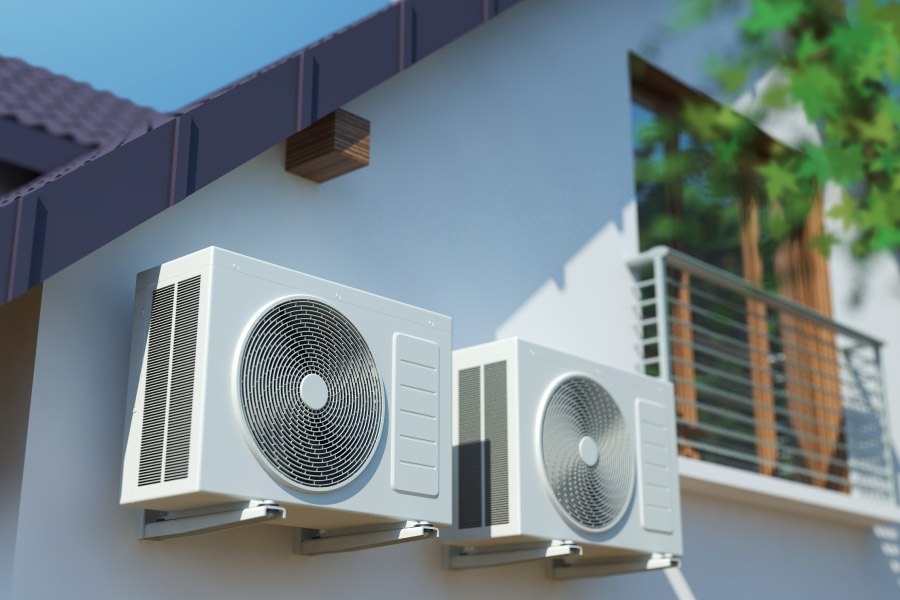
Heating and Cooling Solutions, Mountain Heating & Cooling News
As Montana starts to transition into spring, now is the perfect time to prepare for the upcoming heat. Once the summer hits, the last thing you want is for your A/C unit to be broken, in maintenance, or waiting to be replaced. Investigating your cooling options and installing a new A/C unit now can save you discomfort when we’re in the thick of summer. There are many air conditioner types on the market, so assessing their features and your cooling needs can help you pick the best unit for your home. We’ve laid out the different air conditioner types available and our top tips for selecting the right A/C unit for your needs.
Air Conditioner Types
Air conditioner types can be broken down into two larger categories: stand-alone units and split-system units. Here’s how they work:
- Stand-alone, or free-standing air conditioner units, are comprised of one device. This device contains both sets of metal coils used for cooling your home. One coil collects the heat from your home while the other dispels the heat outside.
- Split-system air conditioners use two devices to cool your home. One device (usually smaller and quieter) is located in the home, and the other device (usually bigger and noisier) is located outside. The cooling metal coil that collects heat is located in the inside unit, and the coil that dispels heat is in the outside unit.
Stand-Alone Air Conditioner Types
Portable Air Conditioner
These models are very popular for those looking for a single room air conditioner. They’re cheap, no-fuss units that can be easily moved around the room of your choice. Hot air collected by the unit is dispelled outside by an air pipe through an exterior wall or window. While they’re easy to move around, the air pipe needs to be moved as well, so they can take up extra floor space.
Window Unit Air Conditioner
These units are self-contained units that are either placed in a window or through a hole in the wall. One part of the unit faces indoors while the other faces outdoors. The part facing indoors collects the hot air, and the part facing outdoors expels the hot air outside. They come in a variety of sizes, and the bigger the unit, the more cool air it generates. You can normally install these units yourself and they typically have a low upfront cost. However, because of their singular, static locations, their cooling capabilities are limited to a single room.
Wall or Floor Mounted Air Conditioner
These air conditioner types can be both stand-alone or split-system units. Using strong supports, these units can either be mounted to the wall or floor with pipes going through the wall to release the hot air outdoors. If run continuously, the units and pipes can become warm to the touch if you are not careful. These units are typically better for single rooms, as the airflow is localized to one place. Floor mounted air conditioners typically cool the room quicker than wall mounted units, as the fan blows cool air at your level.
Split-System Air Conditioner Types
Ductless Air Conditioner
Ductless air conditioners, also known as mini split air conditioners, have become extremely popular over the years. They are great options for apartments or homes with no ductwork and those looking for a more permanent air conditioning solution than window air conditioners. They have two units that are installed on the interior and exterior of your residence. Tubing connects the two systems through the wall that separates them. These are efficient air conditioner types that can be installed in a single room or installed in each room for whole-home cooling. It can become pricy to install a mini split air conditioner in every room in the house, so central air conditioners are more optimal for whole-home cooling.
Central Air Conditioner
If you have a large home and want to cool many rooms at once, a central air conditioner is the best choice for your home. Central air conditioner units are able to cool multiple rooms in your home simultaneously and quietly. They use a split system setup, where the condensing unit is located outside and the evaporative unit is inside next to your furnace. They connect together using refrigerant tubing. The condensing unit generates cool air that is pushed into the evaporative unit. Then, the evaporative unit propels the cool air into your home through your furnace duct system. While central air conditioners are the most expensive option, they are extremely effective and efficient.
5 Tips for Choosing the Right Air Conditioner Type
- Energy Efficiency – Choosing an energy-efficient air conditioner can help you save money on your monthly energy bill in the long run. Many air conditioner types are ENERGY STAR certified, which means they meet the Environmental Protection Agency’s (EPA) standards for using less energy. The higher the ENERGY STAR number, the more energy-efficient an air conditioner is.
SEER rating is also a great measure of an air conditioner’s energy efficiency. Seasonal Energy Efficiency Ratio (SEER) rating is the air conditioner’s cooling output divided by the total energy used in a cooling session. Like ENERGY STAR ratings, the higher the SEER rating, the better the energy efficiency.
- Price – Your budget is king when deciding on an air conditioner unit. If you’re looking for cheap, easy cooling for a single room, a window air conditioner or portable air conditioner maybe your best option. If you are looking for whole-home cooling, a central A/C unit is more expensive but more effective for all-around cooling. Remember that systems with a higher price tend to be more energy-efficient, which can make them less expensive to run in the long term.
- Size – You will need to make sure your A/C unit is the right size for your desired location. If you choose an air conditioner that is too large or small, it can be less efficient and use too much energy. Consult with a professional HVAC technician to ensure you choose an A/C unit with the right dimensions.
- Cooling Power – British Thermal Units (BTUs) are the measure of an air conditioner’s cooling capacity. The higher the BTU number means the more cooling power an air conditioner has. You will need an air conditioner with the BTUs necessary to properly cool your space. Air conditioners can range from 5,000 to 36,000 BTUs, so speak with an HVAC technician to evaluate how many BTUs you need to cool your space.
- Quality – You want to get the most out of your air conditioner, so choosing one that stands the test of time is important. Make sure your chosen air conditioner has reliable, well-made components so it can last you a long time. At Mountain Heating and Cooling, we recommend air conditioner brands like Trane, Lennox, and Mitsubishi for quality A/C units. Typically, more expensive units are higher in quality, but it’s important to choose an A/C unit with specifications that match your cooling needs.
If you need a hand selecting a quality A/C unit, our highly-trained HVAC technicians understand the differences between various A/C units and can help you choose the best unit for your home. Chat with our technicians today.
Need an Expert’s Advice? We’ve Got Your Back!
Choosing an air conditioner unit can be a challenge, so it’s important to get an expert’s advice to ensure your home stays comfortable and operational during the summer. If you need a hand selecting an air conditioner unit before the warm months hit, schedule an appointment with our air conditioning specialists today. At Mountain Heating and Cooling, we take the time to understand your needs and budget so that you can make informed, confident decisions for your home. To schedule an appointment, fill out a contact form or call us at (406) 586-4007.
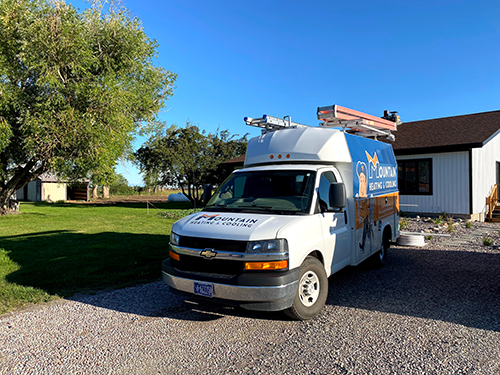
Replacement, Service
Your comfort and safety are our focus 100% of the time. Our COVID in home Technician Procedure is built with you in mind. Here is what we are doing.
COVID prevention all starts at the office
- Daily Staff Temperature Screening/Reporting to office
- We support our team, no team member will be left behind. Paid leave until return.
Onsite COVID In Home Technician Procedure:
The simple procedure of minimizing person-to-person close quarters is our industry-leading best practices response to an awful reality of COVID-19 that we are all currently living with in 2020.
Here’s what to expect when we arrive:
- Your Mountain Heating and Cooling team member will call ahead and confirm your appointment time prior to arriving at your home or business.
- When we arrive we knock or check in at the office, stepping back 6 feet from the door or desk.
- Prior to entering your home or job site we will put on latex gloves, mask and shoe coverings.
We realize you need your home serviced and count it a privilege to serve you. As part of that privilege we have doubled down on our diligence to remove as many risk factors as possible related to the current pandemic challenges of in-home operation.
- We boot up
- We mask up
COVID employee policy
- Employees subjected to known COVID Positive persons must immediately report their exposure.
- Exposed employees are immediately asked to self-quarantine and be tested for the virus.
- Only After employees test negative and are they allowed to return to work
We value your business and safety, along with our teams. Fortunately through care and industry leading practices we are continuing to see rave reviews from customers confident that they are safe in their own home.
We are ready to serve you when you need us most. We look forward to helping our stay safe as we help you make your home more comfortable.
Schedule Your Appointment
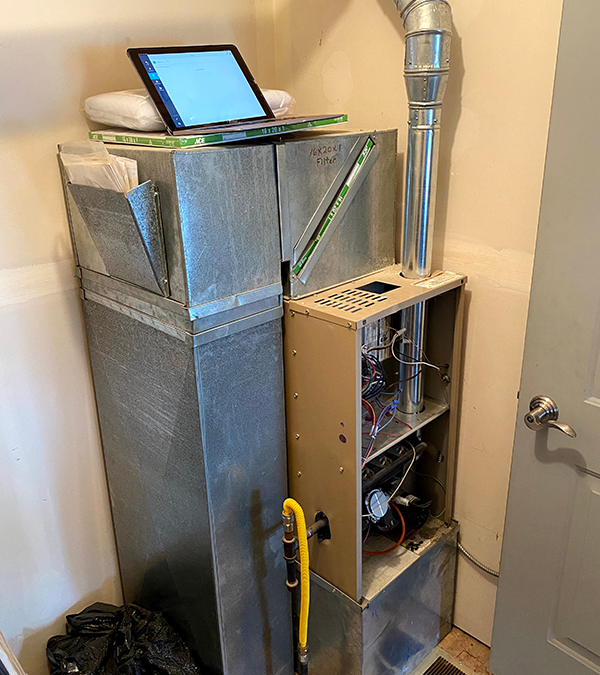
Replacement
During COVID concerns we’ve all had to adapt. The Touchless In Home Furnace and Air Conditioning Proposal is one of the services we created to take care of our most at risk and health concerned community members.
Why a Touchless Proposal?
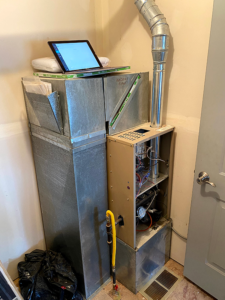 Your world changed in March 2020. Whether you have high-risk family members or concerns about being in contact and exposed to COVID-19 we get it. You don’t have to be made to feel uncomfortable in your own home. We can simply supply our professional assessment of your existing or requested system, from the World Wide Web. We are happy to come to you….digitally.
Your world changed in March 2020. Whether you have high-risk family members or concerns about being in contact and exposed to COVID-19 we get it. You don’t have to be made to feel uncomfortable in your own home. We can simply supply our professional assessment of your existing or requested system, from the World Wide Web. We are happy to come to you….digitally.
AND, if you have a funky schedule, or can’t be home till after work (or the big Bridger Beacon is flashing on a big powder day) the Virtual Heating and Cooling Touchless proposal might be just right for you.
What will happen during my Virtual Home Furnace and Air Conditioning Proposal?
It all starts when you call the office. We’ll take your digits, get to know the current problem you are trying to solve, and schedule an appointment.
Then comes the fun part. Our Comfort Specialist will connect with you (that’s fancy talk for Matt or Corey) at your scheduled appointment time. We’ve used Zoom and Facetime with great results. We love coming to your home and meeting you, but we can always point the camera at you for virtual introduction. Not to mention, this is a great opportunity for you to learn how your HVAC System works and the different equipment involved.
What you’ll need:
- Phone or tablet
- Hi-speed internet or a 4G or better cell mobile device
- Tape Measure
- Flashlight or Headlamp
What part of the house will we need to see?
Most times, in the Gallatin Valley furnaces are in the crawl space, but components can be tucked in closets, attics, garages, too.
Sound like too many spiders for you? We still are happy to come out and do the dirty work, but hey, when we were kids all the spaces we’re visiting were magically mysterious. So when you’re ready, we’ll crawl down or up the ladder. This is going to be fun.
Which components are assessed during your Touchless In Home Furnace and Air Conditioning Proposal?
During your appointment we’re going to walk you through every step. You don’t need any previous knowledge to be able to help us. We provide you the same professional expertise we would if we were in your home, just using you as our in-home videographer and assessor.
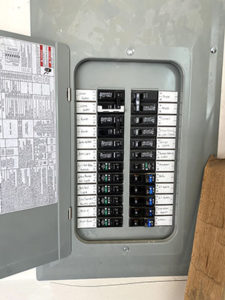
We are going to look at:
- Furnace
- Inside the furnace we’ll get the model number and serial number of furnace
- Attached ductwork
- Filter media
- Space surrounding unit (taking notes of the environment for current concern or future installation of equipment)
- Electrical Supply Panel
- Outdoor unit (existing or future installation)
- Outdoor power source
- Air return vents and home duct system
- Thermostat
- Home measurements
Don’t worry, you don’t have to know what you’re looking at. We can have some fun with that, via video too. “Sally, see that big grey box. No not the Christmas ornaments, the metal one to your left…yeah that one. Ok, get a little closer. Perfect. OK I got that picture. Now point your camera over toward the left”.
After we’ve got the right screen shots, and had you take a 5-6 measurements we’ll get you out of your crawl space and move on to the thermostat and go meet your dog.
Some questions we will ask you about your home:
After all you are the queen or king of your home. The most important part of what we accomplish in our Touchless In Home Furnace and Air Conditioning Proposal is talking to you. You are the pro in your home, and you know what you want to improve in our comfort at your house. We want to know what it feels like, to you, to live in your home as it relates to your heating and cooling.
Here’s some questions that we’ll ask to help us understand your home and give you options to select the right heating and air conditioning equipment to get comfortable when we come to install the selected equipment. (Yeah, it’s true, we haven’t yet found a drone capable of a virtual installation, but our guys and gal installers take the utmost care when they do arrive at your home).
- Are all the rooms in the house getting to the set temperature when your furnace or air conditioning are running?
- Are there rooms that your choose to frequent or avoid because lack of comfort?
- How noisy is your fan when it’s running?
- Does your furnace warm the house?
- Does your air conditioning cool the house?
- Is there a time of day that your home is more comfortable in some rooms than others?
- Does anyone in your house have seasonal allergies?
What can you expect after the Touchless In Home Furnace and Air Conditioning Assessment?
After we visit your home (virtually) we’ll have all the details to give you answers to your heating and cooling questions. We will typically send you 3 proposals (via email) to meet the needs discussed during our virtual home visit with you. Our 3 proposals are titled Good, Better, Best ranging from a basic solution that will address the homes comfort requirements, to a solution that will provide enhanced comfort, warranteed 10 year operation, and some significant energy efficient savings from highly efficient equipment.
Our goal is to teach you enough about your heating and cooling system so you can decide which one meets your needs and fits your budget most effectively.
Whether you’re experiencing a problem with your existing heating and cooling system or looking to add Air Conditioning to your home, we want to help you be comfortable as soon as possible.
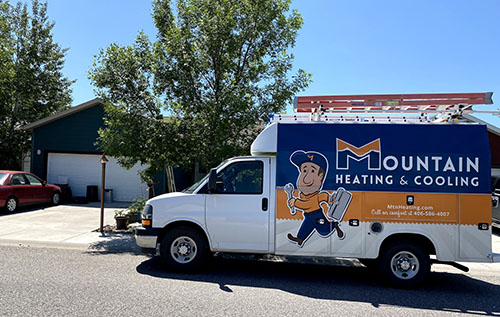
How soon can I schedule my appointment?
We are currently offering in home and Touchless In Home Furnace and Air Conditioning Proposals to fit your schedule.
We’re here to help, and make your system fixes and upgrades as simple and safe as possible.
If a Touchless In-Home Furnace and Air Conditioning Proposal seems right for you, give us a call or click on the link below to schedule your appointment.
We look forward to you showing us around, and helping make your home more comfortable this week. When you do settle on a solution that fits your needs we’ll take the utmost care with our technician in home safety procedures. whether heating, cooling, plumbing or air purification
Schedule Your Appointment
Ductless
Heat Pumps vs. Air Conditioners, What is the Difference?
It’s springtime in Bozeman, and lots of homeowners are beginning to shop for ways to cool their homes in the summer, and one question we receive every year is “What is a heat pump compared to an air conditioner?”
Both a heat pump or an air conditioner are excellent options for heating and cooling your home, but which one you choose will depend on your current heating situation. If you already have an efficient furnace, air conditioning might be the best choice for you. If you have an older furnace or are looking for a furnace replacement, a heat pump might be a better option, because a heat pump can both heat and cool your house. Here are a few details about each product and how they work:
An air conditioner draws heat from the air inside your house and pushes it outside. It then uses refrigerant to replace the warm air inside your home with cool air. An air conditioner can only send energy one direction, which means all it can do is cool your house.
Air Conditioning is an ideal choice for people who already have an efficient heating system in their home. If you already have a high-efficiency gas furnace, an air conditioner is probably the right choice for you, because they typically cost less up-front than heat pumps.
The big mechanical difference for a ductless heat pump vs. an air conditioner is that a heat pump can reverse the flow of energy, so it can pull heat from the outside air to warm your home, but it can also pull heat from the air in your house and cool it off. Unlike an air conditioner, which can only be used during one season, a heat pump can be used to keep your home at a comfortable temperature throughout the year.
In the fall, when it’s cool, you can efficiently heat your home with a heat pump. If you are replacing a furnace or have an older, inefficient furnace and are considering adding AC, a heat pump is an energy-efficient choice that will satisfy both requirements. However, a heat pump isn’t as robust as a traditional heating system, so when it gets really cold, you will still need to use your furnace or another heating system from time to time.
Still have questions about heat pumps vs. air conditioners? Schedule your free consultation with Mountain Heating and Cooling today.




 Your world changed in March 2020. Whether you have high-risk family members or concerns about being in contact and exposed to COVID-19 we get it. You don’t have to be made to feel uncomfortable in your own home. We can simply supply our professional assessment of your existing or requested system, from the World Wide Web. We are happy to come to you….digitally.
Your world changed in March 2020. Whether you have high-risk family members or concerns about being in contact and exposed to COVID-19 we get it. You don’t have to be made to feel uncomfortable in your own home. We can simply supply our professional assessment of your existing or requested system, from the World Wide Web. We are happy to come to you….digitally.
